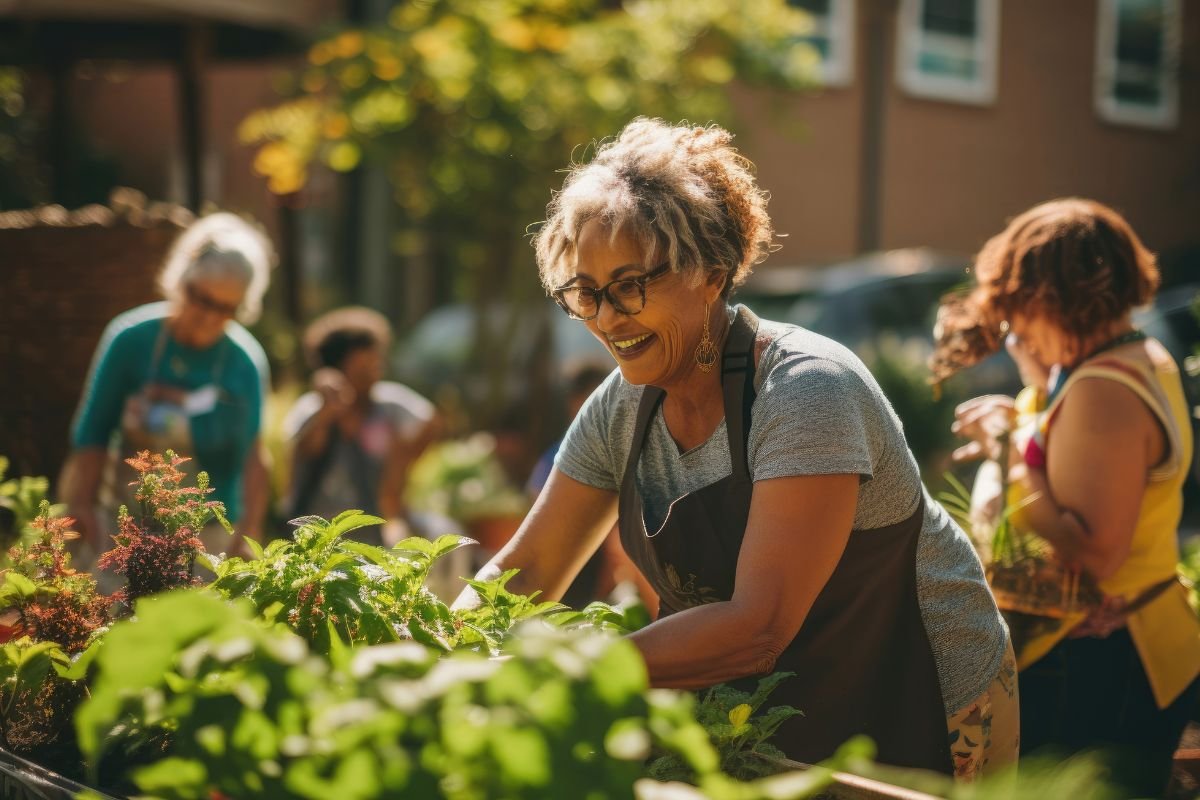Beyond the Backyard: Tips for Community Gardens
At Crewcut we understand the importance of a well-maintained lawn and garden, not just in your backyard but also in community spaces. Community gardens are wonderful assets, offering a green oasis in urban environments and fostering community spirit. However, they come with their own unique set of challenges. Whether you’re a seasoned gardener or a newcomer looking to make an impact, here are some essential tips to ensure your community garden thrives.
Plan thoroughly before planting
Select the right location
Choose a site with good sunlight (at least 6-8 hours per day), access to water, and soil that drains well. Urban areas may have vacant lots ideal for transforming into a green space, but ensure the soil is tested for contaminants.
Design the garden layout
Plan the layout to accommodate pathways, garden beds, and communal spaces. Raised beds are beneficial for accessibility and better soil management. Include areas for composting and tool storage and consider incorporating seating areas for relaxation and socialising.
Prepare the soil
Test and amend the soil
Conduct a soil test to determine its pH and nutrient levels. Based on the results, amend the soil with compost, manure, or other organic materials to create a fertile environment for plants.
Implement sustainable practices
Encourage sustainable practices such as crop rotation, mulching, and composting. These methods improve soil health, conserve water, and reduce the need for chemical fertilisers and pesticides.
Choose the right plants
Grow what you eat
Select a variety of fruits, vegetables, herbs, and flowers that suit the tastes and needs of the community members. Consider plants that are well-suited to your climate and soil conditions.
Stagger planting times
Plan for successive planting to ensure a continuous harvest throughout the growing season. This approach helps maximise the use of garden space and provides a steady supply of fresh produce.
Maintain the harvest wisely
Create a maintenance schedule
Divide responsibilities among members to ensure the garden is well-maintained. Tasks might include watering, weeding, and pest control. A shared calendar can help organise these duties and ensure nothing is overlooked.
Practice integrated pest management
Use IPM strategies to manage pests with minimal environmental impact. This includes introducing beneficial insects, using organic pesticides, and employing physical barriers like row covers.
Harvest regularly
Encourage members to harvest crops promptly and share the bounty. Regular harvesting promotes plant health and ensures produce is consumed at its peak freshness.
Educate and engage
Host workshops and events
Organise educational workshops on gardening techniques, composting, and other relevant topics. Community events like potlucks or harvest festivals can also bring people together and celebrate the garden’s success.
Involve the wide community
Reach out to local schools, businesses, and organisations to involve them in the garden. Partnerships can bring in additional resources, volunteers, and funding.
Plan for the future
Sustainability and expansion
Consider long-term sustainability by planning for crop rotation, soil health, and perennial plants. If space allows, think about expanding the garden to include new plots or features like a greenhouse or rainwater harvesting system.
Evaluate and adapt
Regularly assess the garden’s progress and adjust as needed. Gather feedback from members to identify areas for improvement and celebrate achievements.
Community gardens are much more than plots of land where food is grown—they are hubs of learning, collaboration, and community building. By carefully planning the garden's layout, fostering a strong sense of community, maintaining healthy soil, selecting appropriate plants, and educating members, your garden can become a thriving green space that benefits everyone involved. Remember, the success of a community garden lies in the collective efforts of its members. Regular communication, shared responsibilities, and a commitment to sustainable practices will ensure that your garden not only provides fresh produce but also strengthens community bonds for years to come. Happy gardening and may your community garden flourish!

